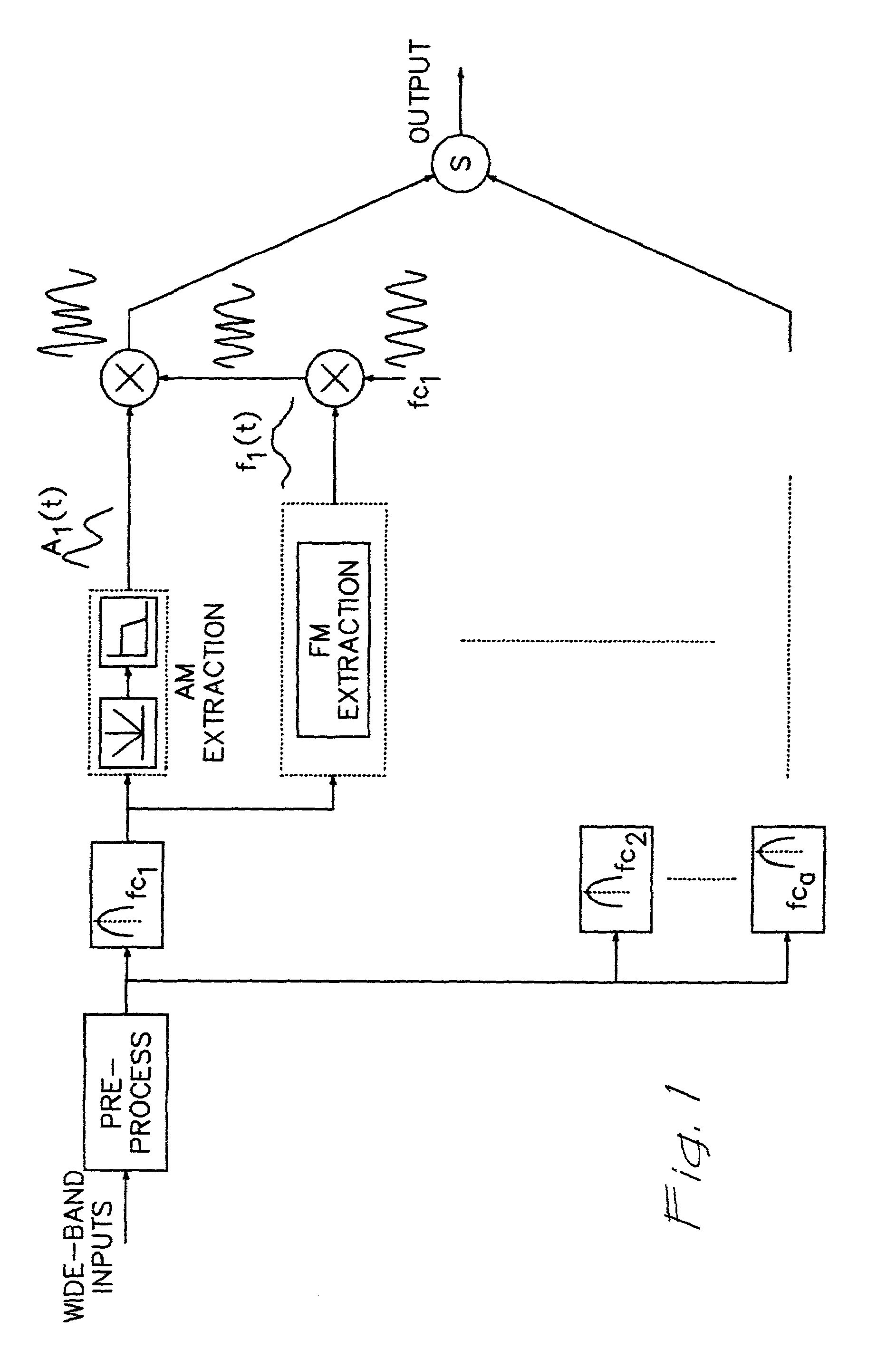Cochlear implants and apparatus/methods for improving audio signals by use of frequency-amplitude-modulation-encoding (FAME) strategies
a technology of frequency modulation and cochlear implants, which is applied in the field of apparatus/methods for modifying acoustic signals, can solve the problems of little or no work done in encoding frequency modulation in cochlear implants (or any other neural prosthetic devices) and use it in audio compression, and achieve the effect of improving the quality of sound perception
- Summary
- Abstract
- Description
- Claims
- Application Information
AI Technical Summary
Benefits of technology
Problems solved by technology
Method used
Image
Examples
Embodiment Construction
[0024]FIG. 1 shows an acoustic simulation of the FAME strategy. A wide-band signal (speech, music or any other audio signals) is first processed to have an ideal bandwidth and spectral shapes, e.g., 20-20000 Hz and spectral flattening for speech sound. The pre-processed audio signal is then filtered into N number of narrow frequency bands. N will be determined based on optimal recognition and compression. The narrow-band signal (only band 1 is demonstrated as an example) will be subject to parallel extraction of amplitude and frequency modulations. Amplitude modulation can be extracted by simple rectification and low-pass filtering as shown in the diagram, or digital Hilbert transfer. Frequency modulation can be extracted by calculating the instantaneous phase angle (frequency) of the fine-structure or zero-crossings of the narrow-band signal. The FM can have a wide range of instantaneous frequency, which will be filtered and / or compressed based on the perceptual evaluations in both...
PUM
 Login to View More
Login to View More Abstract
Description
Claims
Application Information
 Login to View More
Login to View More - R&D
- Intellectual Property
- Life Sciences
- Materials
- Tech Scout
- Unparalleled Data Quality
- Higher Quality Content
- 60% Fewer Hallucinations
Browse by: Latest US Patents, China's latest patents, Technical Efficacy Thesaurus, Application Domain, Technology Topic, Popular Technical Reports.
© 2025 PatSnap. All rights reserved.Legal|Privacy policy|Modern Slavery Act Transparency Statement|Sitemap|About US| Contact US: help@patsnap.com



